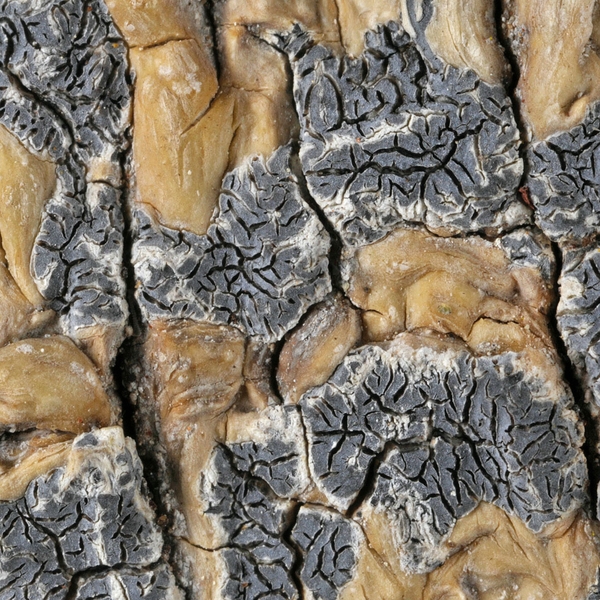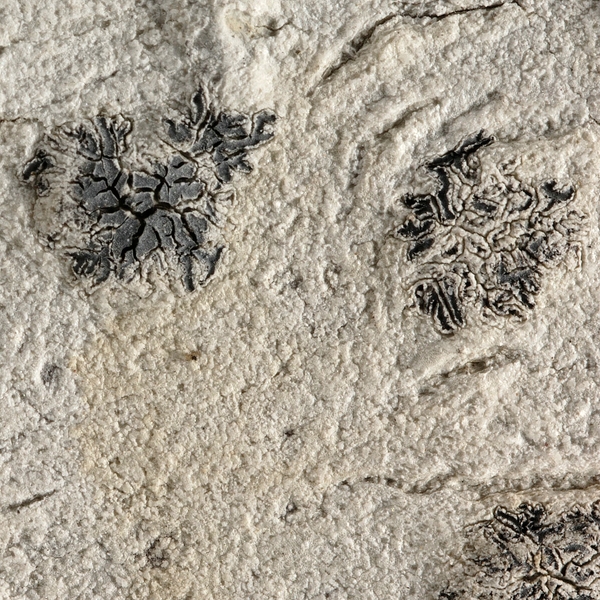Galapagos Species Database
The Galapagos Species Database shares the information about the species from our Natural History Collections.
Sarcographa tricosa
liquen de escritura, Script lichen



Thallus inconspicuous and almost entirely embedded within its substrate, of the same color or slightly darker, grayish, greenish, or ochraceous; or conspicuous, thin to moderately thickened and distinctly developed on the substrate surface, whitish or grayish; surface smooth, not pruinose; Apothecia immersed to ±prominent, lirellate; lirellae densely branched and distinctly stellate, aggregated in pale, uncarbonized stromata containing large Ca-oxalate crystals; labia thin, distinct, narrow, at stromata periphery typically surrounded by distinct thalline rim that is less developed in the stromata centre; disc at the stromata centre expanded and flattened, widely concave towards the periphery, with a white, farinose pruina; exciple thin, laterally with brownish pigment, barely becoming carbonized, basally distinctly carbonized and carbonization expanding with age; hymenium hyaline, inspers, I–; ascospores pale gray, soon brownish, I+ reddish brown, 8 per ascus, oblong to broadly fusiform, 14-20 x 5-7. Chemistry: No substances found; all spot tests negative.
Phaeographis inusta mentioned by Archer (2006) appears to be an extremely similar species and the distinction of S. tricosa, S. subtricosa and Phaeographis inusta needs further study. Classically the two genera Phaeographis and Sarcographa are distinguished by the presence of distinct stromata and lirelline apothecia with thickly carbonized hypothecia. Archer (2006, p. 144), however, refers to the stromata of Sarcographa subtricosa as “ill-defined” and describes its exciple as generally “uncarbonized, inconspicuous”. He also refers to the proper exciple of P. inusta as “…thin, weakly and variably carbonized…” (Archer 2006, p. 123). Staiger (2002) describes the exciple and hypothecium of S. tricosa as distinctly carbonized, but the stromata as poorly differentiated from the thallus, remaining uncarbonized between the lirellae. She examined little material, and suggests that S. tricosa may be a synonym of S. medusulina, if it can be demonstrated that stromata carbonization is variable. The Galapagos material very consistently has a distinctly carbonized hypothecium thickening and becoming more strongly carbonized with age. Its lateral exciple, however, remains thin and poorly carbonized. Although the lirellae are always densely and intricately branched, the pale stromata can only be distinguished well in specimens with inconspicuous thalli that are growing largely within their bark substrate. In specimens with well developed thalli on the bark surface the stromata are less clearly distinguished from the surrounding thallus surface. Overall, the Galapagos material agrees best with S. tricosa as described by Staiger (2002), but the distinction of the episubstratal and endosubstratal thalli require further study.
Domain
Eukaryota
Kingdom
Fungi
Phylum
Ascomycota
Class
Lecanoromycetes
Order
Ostropales
Family
Graphidaceae
Genus
Sarcographa
Species
tricosa
Taxon category: Accepted
Origin: Native
Map of specimen collection localities or observation records for this species in our collections database.
Distribution: A pantropical species; new to Galapagos, where it is one of the most common species of the Graphidaceae, throughout the dry and transition zone, rarely also in the humid zone, typically in sunny and exposed habitats, mostly on native trees, very common on Bursera graveolens, but also on Zanthoxylum
You are welcome to download and use the information found in this page, acknowledging its source.
This page should be cited as follows:
"Galapagos Species Database, Sarcographa tricosa", dataZone. Charles Darwin Foundation, https://datazone.darwinfoundation.org/en/checklist/?species=3364. Accessed 2 August 2025.


